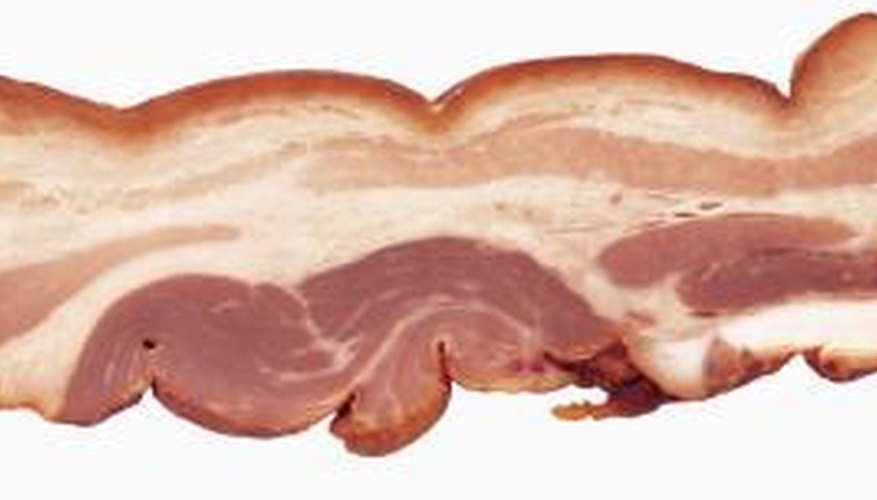Bacon is a staple for breakfasts, and comes in a vast array of cuts and flavours. One of the most distinct differences in bacon is between smoked and unsmoked types. The choice between the two depends on your flavour preference and how much work you want to do to season the meat to achieve a certain taste.
Smoked Bacon
Smoked bacon is the type generally consumed in the United States. In fact, it is the way in which most all bacon in this country is cooked; the differences come in the type of wood used to smoke the meat. This is where the unique flavours come into play, as hickory smoked bacon has a different flavour from applewood smoked pork. While these are among the more common woods used to smoke bacon, there are numerous others, depending on the chef and the locale.
- Smoked bacon is the type generally consumed in the United States.
- While these are among the more common woods used to smoke bacon, there are numerous others, depending on the chef and the locale.
Unsmoked Bacon
Unsmoked bacon can be found overseas, in countries like the United Kingdom and Ireland. The New York Times states that what Americans refer to as salt pork is actually just unsmoked bacon; in the U.K., it is called green bacon and is cooked to a lesser degree than what most diners in the U.S. are used to.
Differences
The differences between the two bacon types come from the way in which they are cooked. The smoked bacon is just that: smoked over a specific type of wood to give it a distinct flavour; unsmoked bacon is cooked to whatever specification the chef would like, with no flavour initiated into the meat before it is sold commercially. Geography also plays a role here, as unsmoked bacon is rarely consumed in the United States.
Similarities
The core similarities between smoked and unsmoked bacon come in the cuts of meat. Both products are pork and the cuts are generally the same, in terms of back cut, centre cut, side bacon from pork belly and slab bacon. Bacon types and cuts vary by country, as Canadian bacon looks more like a slab of ham, while shoulder cut bacon is common in Japan.
